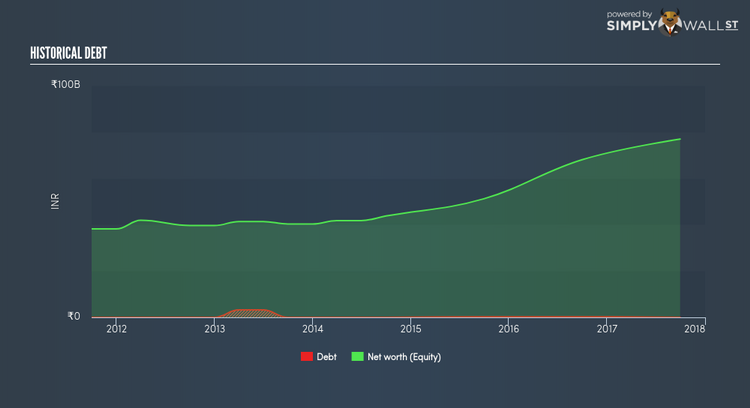All You Need To Know About Siemens Limited’s (NSE:SIEMENS) Financial Health

Stocks with market capitalization between $2B and $10B, such as Siemens Limited (NSEI:SIEMENS) with a size of ₹381.78B, do not attract as much attention from the investing community as do the small-caps and large-caps. However, history shows that overlooked mid-cap companies have performed better on a risk-adjusted manner than the smaller and larger segment of the market. Today we will look at SIEMENS’s financial liquidity and debt levels, which are strong indicators for whether the company can weather economic downturns or fund strategic acquisitions for future growth. Note that this commentary is very high-level and solely focused on financial health, so I suggest you dig deeper yourself into SIEMENS here. View our latest analysis for Siemens
Can SIEMENS service its debt comfortably?
What is considered a high debt-to-equity ratio differs depending on the industry, because some industries tend to utilize more debt financing than others. A ratio below 40% for mid-cap stocks is considered as financially healthy, as a rule of thumb. The good news for investors is that Siemens has no debt. It has been operating its business with zero debt and utilising only its equity capital. Investors’ risk associated with debt is virtually non-existent with SIEMENS, and the company has plenty of headroom and ability to raise debt should it need to in the future.
Can SIEMENS pay its short-term liabilities?
Given zero long-term debt on its balance sheet, Siemens has no solvency issues, which is used to describe the company’s ability to meet its long-term obligations. But another important aspect of financial health is liquidity: the company’s ability to meet short-term obligations, including payments to suppliers and employees. At the current liabilities level of ₹51.85B liabilities, it appears that the company has been able to meet these commitments with a current assets level of ₹102.84B, leading to a 1.98x current account ratio. For Industrials companies, this ratio is within a sensible range as there’s enough of a cash buffer without holding too capital in low return investments.
Next Steps:
SIEMENS has no debt as well as ample cash to cover its short-term commitments. Its safe operations reduces risk for the company and shareholders, though, some level of debt could also ramp up earnings growth and operational efficiency. I admit this is a fairly basic analysis for SIEMENS’s financial health. Other important fundamentals need to be considered alongside. I recommend you continue to research Siemens to get a better picture of the stock by looking at:
Future Outlook: What are well-informed industry analysts predicting for SIEMENS’s future growth? Take a look at our free research report of analyst consensus for SIEMENS’s outlook.
Valuation: What is SIEMENS worth today? Is the stock undervalued, even when its growth outlook is factored into its intrinsic value? The intrinsic value infographic in our free research report helps visualize whether SIEMENS is currently mispriced by the market.
Other High-Performing Stocks: Are there other stocks that provide better prospects with proven track records? Explore our free list of these great stocks here.
To help readers see pass the short term volatility of the financial market, we aim to bring you a long-term focused research analysis purely driven by fundamental data. Note that our analysis does not factor in the latest price sensitive company announcements.
The author is an independent contributor and at the time of publication had no position in the stocks mentioned.


